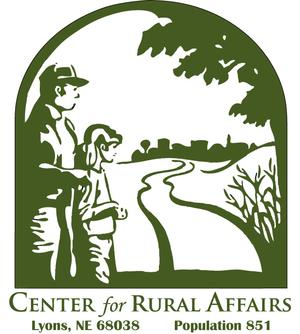|
|
Medicaid and Rural
America
by The Center for Rural Affairs, Syracuse Journal-Democrat
March 1, 2012

Picture Credit:
Center for Rural Affairs
Lyons, Neb.
—Medicaid protects long-term care for millions of seniors, helps people
with disabilities live independently and provides health coverage that
ensures children can see a doctor when they get sick. The Center for
Rural Affairs released a new health care report today, entitled –
Medicaid and Rural America – that examines these and other vital roles
Medicaid plays in rural areas.
“A variety of unique characteristics of rural communities make Medicaid
crucial for rural people and rural places,” said Jon Bailey, Rural
Research Director at the Center for Rural Affairs and author of the
report.
Bailey also pointed out that the Nebraska Legislature is considering
two bills in response to proposed cuts to Medicaid services for
seniors, children and people with disabilities. LB 826 would require
approval of the Legislature for any changes to Nebraska’s Medicaid
program. LB 952 would proactively stop proposed cuts to services for
over 170,000 Nebraskans, including proposed eliminations or cuts in
senior home health services, nursing visits for the elderly and
disabled, childhood nutrition services and behavioral health therapy
for children.
“The demographics and health care infrastructure of rural America make
Medicaid a vital source of insurance coverage, filling gaps in Medicare
coverage and the availability of private insurance,” Bailey continued.
According to Bailey, rural poverty rates are generally higher. Rural
residents have lower rates of employer-sponsored health insurance. And
rural areas have a higher proportion of older persons in their total
population.
Bailey’s report goes on to explain that about 65 percent of families
with non-elderly Medicaid enrollees have at least one worker in the
family, with nearly half having at least one full-time worker.
“Many perceive Medicaid as the classic ‘welfare’ program,” said Bailey.
“That perception is simply not true.”
A full copy of the report can be viewed and downloaded at:
http://files.cfra.org/pdf/Medicaid.pdf.
The Center for Rural Affairs report makes a detailed case that Medicaid
is a critical piece of the rural health care system. The connections
between rural areas and Medicaid include:
- The
unique rural demographics of an older, lower income, more disabled and
less healthy population with lower rates of private health insurance
require a well-functioning Medicaid program.
- Medicaid
provides health insurance coverage and health care access for rural
children and the disabled, both with limited health insurance options.
- Significantly
more people in rural areas would be without health insurance without
Medicaid coverage.
- Medicaid
is a primary financer of long-term care, vital in rural areas with
higher rates of elderly population and greater reliance on nursing
facilities.
- Medicaid
helps expand health services—particularly mental health services—that
would otherwise be limited or nonexistent in rural areas.
- Medicaid
keeps health care facilities and health care providers in rural areas
by providing a significant portion of patient revenue.
- Medicaid
enhances the quality of life in rural areas by providing greater access
to rural health care services.
- Medicaid
helps the rural economy by providing jobs and local revenue.
In the report,
Bailey also provides evidence that Medicaid is also vital to the rural
health care infrastructure and to rural communities. Health care
providers, especially those who serve large percentages of Medicaid
patients, rely on Medicaid payments to cover the costs of treating
those patients. Federal and state Medicaid dollars contribute to rural
economic development by generating health care jobs and other related
businesses and services.
“In
many respects, Medicaid has become a rural program,” explained Bailey.
The
most recent data on Medicaid coverage show that 16 percent of rural
residents had Medicaid coverage in the past year, compared to 13
percent of urban residents. And a recent analysis of those eligible for
Medicaid from state data affirms the importance of Medicaid to rural
people.
The
data from 35 states and the District of Columbia shows that more rural
than urban residents are eligible for Medicaid in 31 states. (New
Jersey and the District of Columbia, have no rural counties). In 13
states the rural-urban variation was five percentage points higher for
the rural population.
“The
importance of Medicaid to certain populations - children, low-income
disabled, low-income elderly and pregnant women - in rural America is
especially striking,” Bailey concluded.
Established in
1973, the Center for Rural Affairs is a private, non-profit
organization working to strengthen small businesses, family farms and
ranches, and rural communities through action oriented programs
addressing social, economic, and environmental issues.
More Information on US Health Issues
|
|



